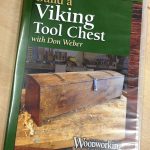We may receive a commission when you use our affiliate links. However, this does not impact our recommendations.
I woke up this morning knowing I had to write a blog post today on the topic of ogees. “Oh, geez,” was my first thought. “I don’t really know what an ogee is.” By noon, after looking at lots of pictures and write-ups, I had determined that an ogee is an S-shaped curve. Simple as that. Why didn’t anyone tell me – before it was already time for a lunch break?
With a healthy meal in me (salad), I realized I had been looking at an ogee in my Adirondack chair plans for several weeks. The arm brackets are little S-shaped curves. The reason I have been looking at these drawings for weeks is that, before today, I had no idea how I was going to draw and cut these curves efficiently, accurately and repeatedly. I figured by staring at the drawings long enough maybe some solution would occur to me.
There are a couple ways to draw an S-shaped curve. One method, of course, is freehand drawing. This is perfectly acceptable, and if you do it on a piece of scrap material you will then have a pattern with which to trace matching curves on each of your workpieces.
I want to limit the amount of pattern-making I have to do for this project, so I decided to go with the alternative method for drawing ogees. Christopher Schwarz wrote a post on this recently, but it’s hard to understand the process from a written series of steps. Megan Fitzpatrick then pointed me to a Roy Underhill video that is currently free on the PBS site. The video helped me understand the process better, and I am off and running on my arm brackets.
Oh Gee, the S-Shaped Curve is Everywhere in Woodworking
Now that my eyes and hands are trained for ogees, I am seeing these S-shaped curves in a lot of places. You’ll find them not only on board faces in woodworking, but also as profile cuts on mouldings or edges. Most woodworkers make these profile cuts on a router table, with a specialty router bit. But there are other ways. “Exercises in Woodworking” recommends that you teach yourself to cut an ogee profile with a gouge and chisel. And our latest DVD, “Make a Custom Ogee Moulding Plane,” is all about cutting the profile in repeatable fashion with a specialty handplane. Check it out!
The S-shaped curve is also used to depict growth over time on a line graph. It is fair to say that my knowledge of ogees, over the course of the day, has followed that trajectory!
How do you draw and cut curves in your woodworking?
–Dan Farnbach
Here are some supplies and tools we find essential in our everyday work around the shop. We may receive a commission from sales referred by our links; however, we have carefully selected these products for their usefulness and quality.









As there are 109 Woodwright videos on the PBS site, it would have been helpful to mention the title or number.
Hi Dan,
Can you or Megan give us a small hint as to which Underhill show you are referring to? Can you at least narrow down which year? Thanks.
If you’re doing it “old school”, aka sans or sin CAD, then you can take a few different approaches with creating an ogee curve. One is to use a large french curve template (still available though places like Staples). The other is to use a flexible rule (basically a rubber strip with a bendable wire that runs through it, which can be shaped to any form you like. The last, is to use a pencil and compass to draw it, and then transfer it to a wooden template for repeated use. I have ogee curves on the ends of all the outside beams that form my pergola and gates in my home, and the particleboard template still hangs in my shop for whenever I need it again. If you need a huge ogee, you can use a beam compass. Lee Valley sells some inexpensive gear to create one of pretty much any length you need. I’m not an agent for them, but I can honestly attest to handing over more than my fair share of income over the years. Like a candy store for woodworkers. But I digress. Here’s the URL of a .pdf basic drafting guide, and on page 24 of that document you’ll find instructions on how to draw an ogee curve.
http://www.most.gov.mm/techuni/media/Ar_01012_1.pdf
Hey Dan
http://rhin.crai.archi.fr/rld/plugin_details.php?id=828
This URL is for a Cyma curve. (reverse Ogee) This plugin is great for SketchUp
As a boatwright, I deal quite a lot with irregular curves that must be “fair curves.” Fair is a term of art that’s mighty difficult to define and at the end of the day is all in the eye of the beholder. We do have tools to help, though. Typically we use battens and means to hold the battens in position (pins, tacks, ice picks, lead weights (on the drafting table, usually), and move the positioning means endlessly by fractions of millimeters until the curve pleases the eye.
Perhaps as a result of working with fair curves on boats, I find geometrically precise curves to be less graceful and even awkward. And I tend to avoid geometrically constructed curves (in favor of faired irregular curves) in other work when I can. A practiced eye makes far more interesting shapes (in my opinion).